Cut
People often confuse diamond shape with diamond cut. Shape of the diamond is the outward appearance. When the diamond jewelers use the word cut, they are referring to reflective qualities of the diamond not their shape. Quality of diamond cut is a crucial part of 4Cs of diamonds. A great cut provides brilliance to the diamond. Finish and angles of all the diamonds lets you determine the diamond’s ability to handle light that results in its brilliance.
When a diamond has a good cut, light travels through it easily, adding to its spark. The light that is passed through the diamond because of cut is alone responsible for making the diamonds shine and increase their desirability. If a diamond is not cut properly, light enter through the table after reaching the facets, it leaks out from bottom or side, cutting down its brilliance.
Good Cut diamonds reflect most of the light that passes through them. The proportion of these diamonds is outside the preferred range. Diamonds that fall under this category will allow you save money without compromising on beauty and quality of the diamond. Fair and Poor quality diamonds reflect very little proportion of light that is entered to them. These diamonds are cut in order to increase carat weight above all the other considerations.
Excellent
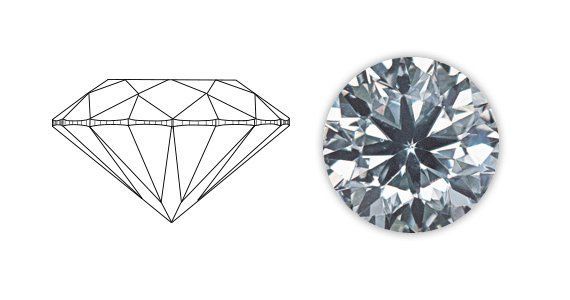
The diamond, which has an even pattern of bright and dark areas, scores in the top category for all grade-setting determinants.
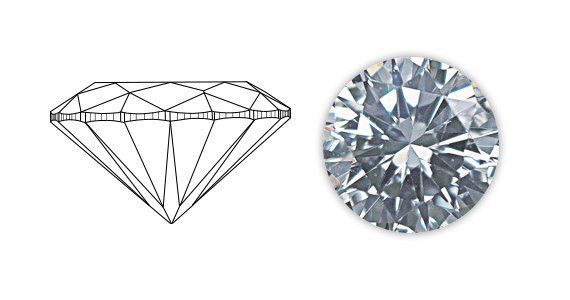
This diamond’s grade is determined by its fire, scintillation, and weight ratio. A somewhat steep crown angle, combined with a slightly steep pavilion and this total depth, leads to a diamond that displays a slightly dark ring within the table edge, as well as somewhat dark upper-girdle facets.
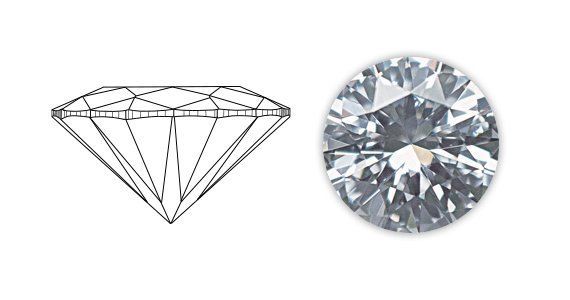
This diamond’s grade is limited by its scintillation. The shallow crown angle and low crown height lead to a face-up appearance with a lack of contrast in its pattern and localized darkness (especially in the table area).
Fair
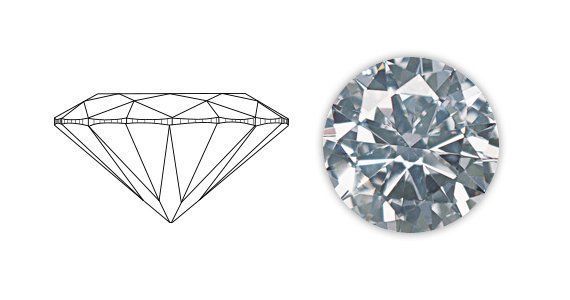
This diamond’s grade is limited by its scintillation. The combination of a shallow crown angle and a somewhat shallow pavilion angle leads to a face-up appearance with a lack of contrast and general darkness.
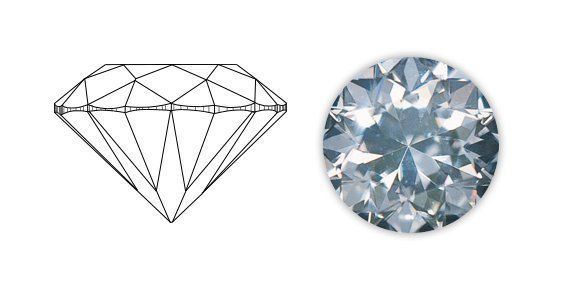
This diamond’s grade is determined by its fire, scintillation, and weight ratio. A slightly steep crown angle, combined with a steep pavilion angle and large total depth, causes this diamond to display general darkness in the table area and a very dark upper-girdle area.
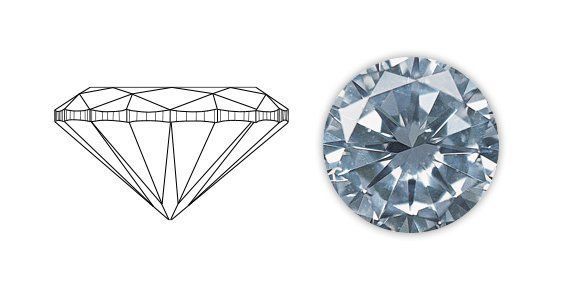
This diamond’s grade is limited by its brightness and scintillation. The large table and a somewhat shallow crown height, with this pavilion angle, cause a general darkness in this diamond, along with a slight fisheye that becomes more evident when the diamond is tilted.
Poor
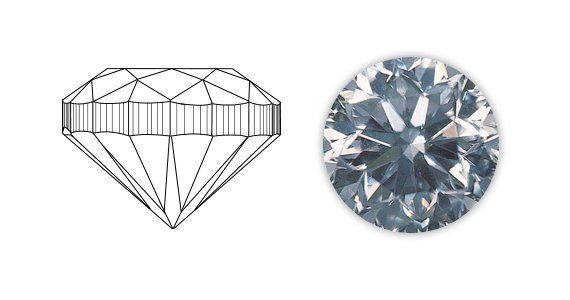
This diamond’s grade is limited by its weight ratio. Although most of the proportions for this diamond are fairly standard, the extremely thick girdle greatly increases the total depth. Therefore, this diamond’s diameter is much smaller than its carat weight would indicate.
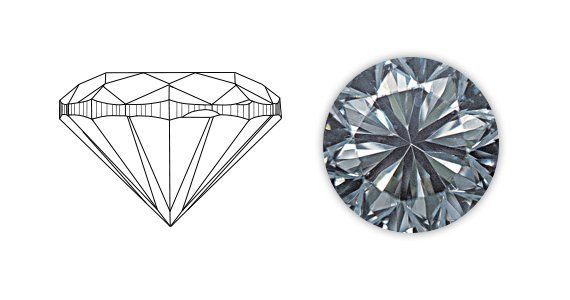
This diamond’s grade is limited by its fire and scintillation. This slightly steep crown angle, very steep pavilion angle, and large total depth all cause this diamond to have a very dark table area, along with a very dark upper-girdle areas.
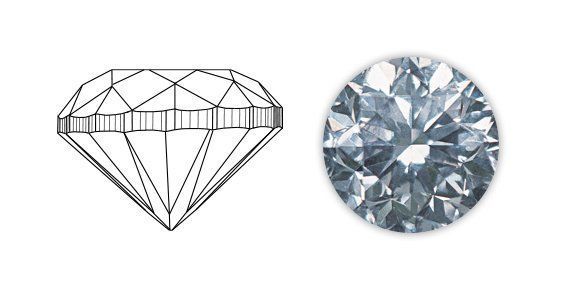
This diamond’s grade is also limited by its weight ratio. The somewhat steep crown angle, slightly steep pavilion angle, and very thick girdle greatly increase the total depth. Therefore, this diamond’s diameter is much smaller than its carat weight would indicate.

